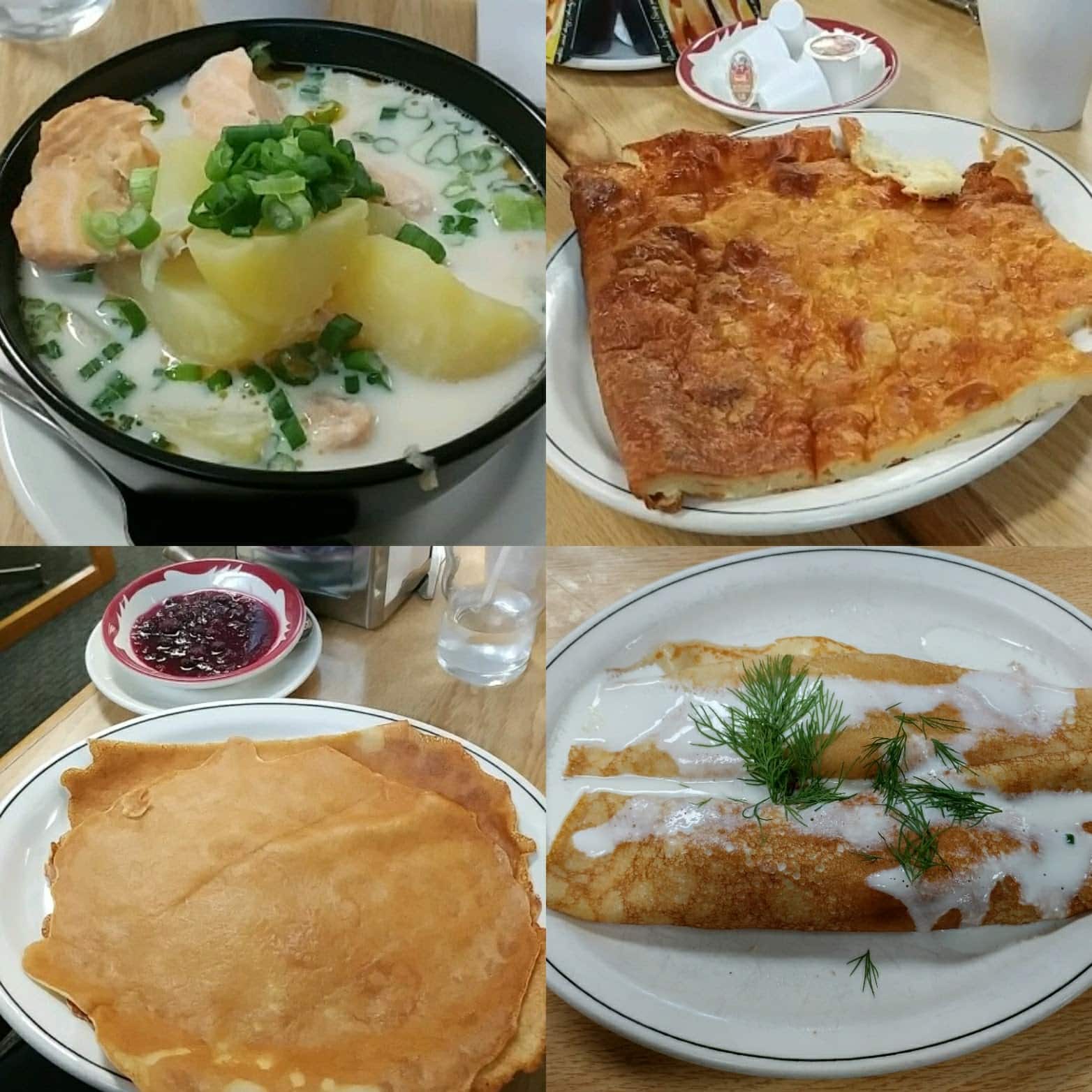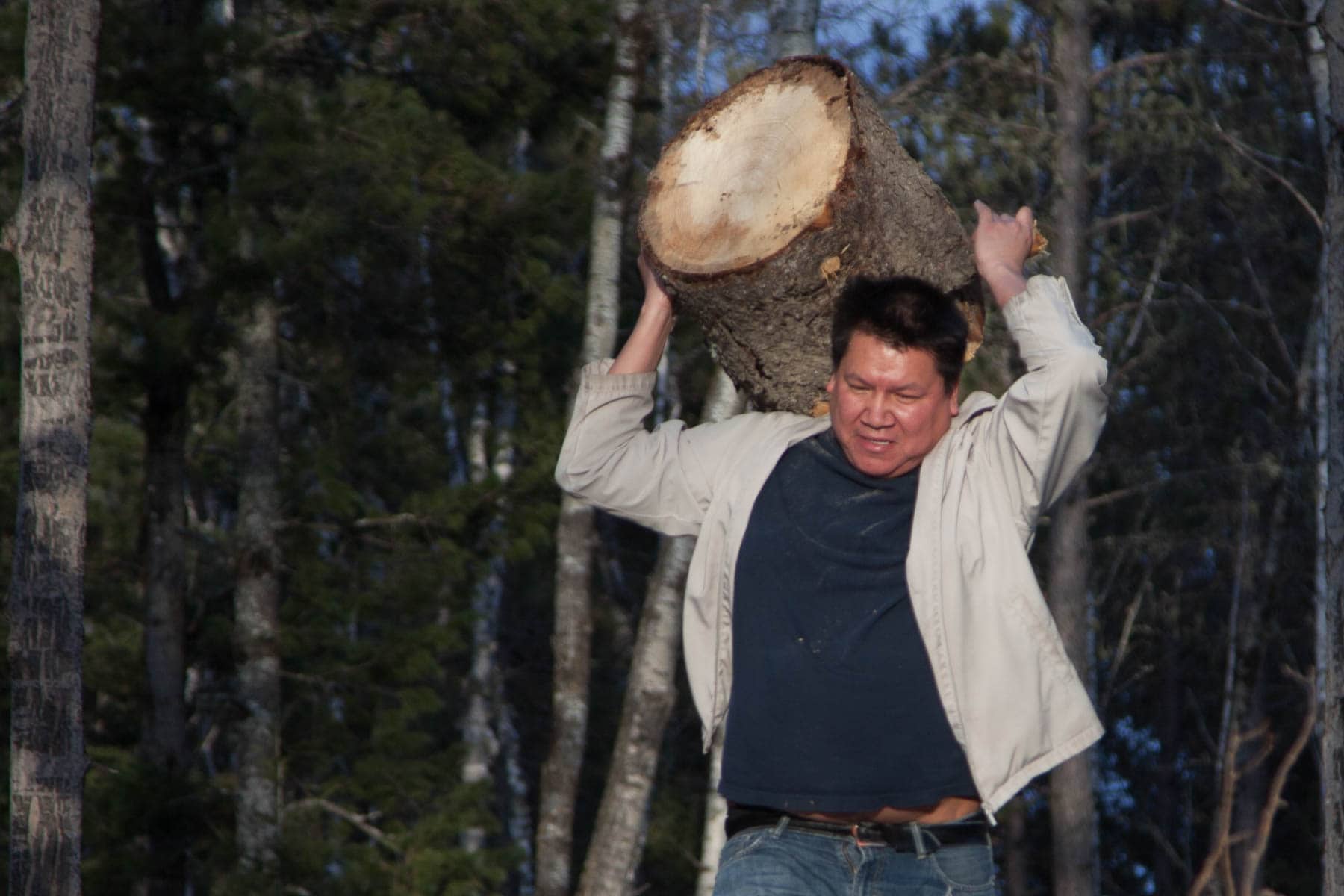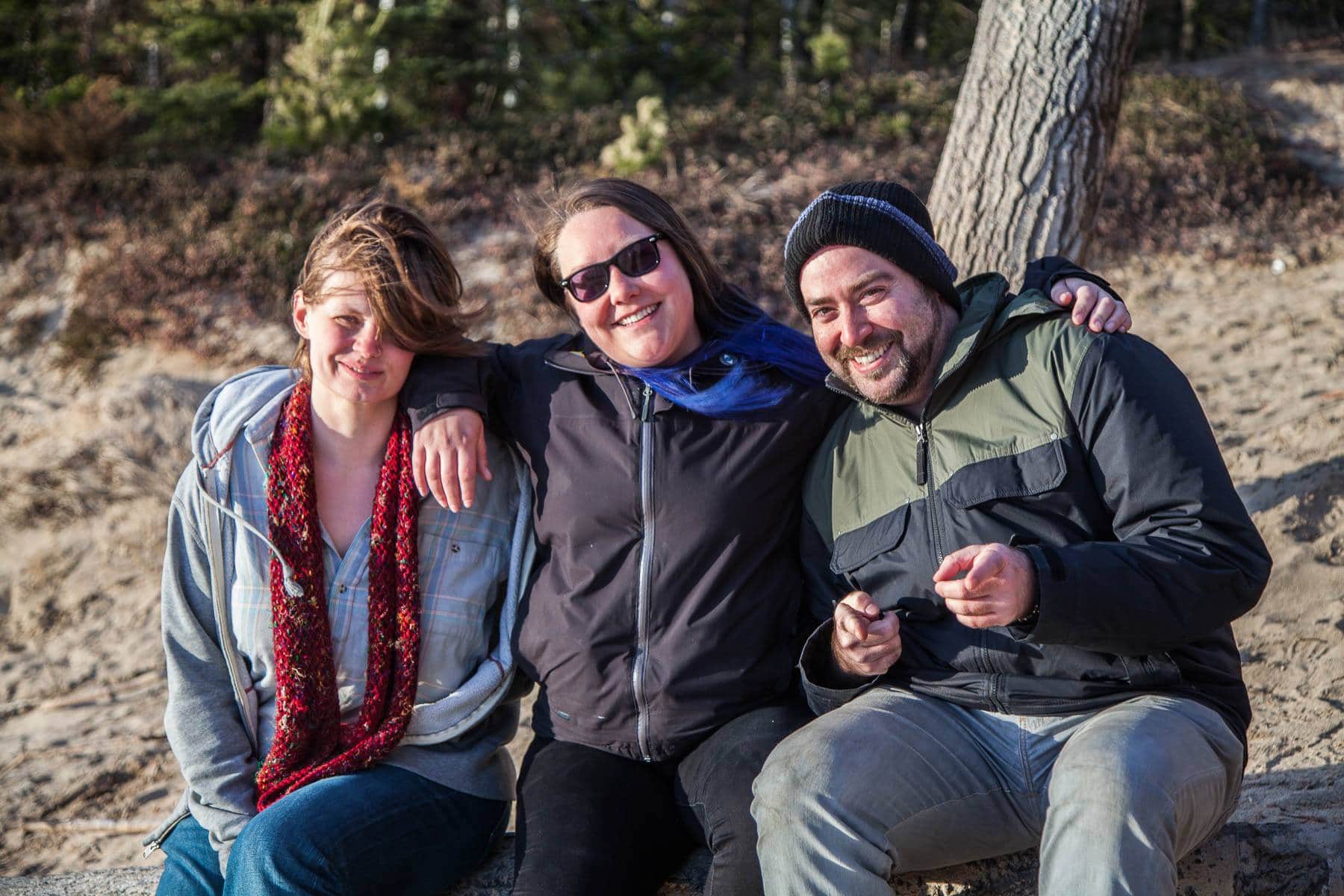By Melody McKiver, Indigenous Reporters Program Field Coordinator
It feels like we only just finished sending off the trainers to their 2016 communities, and yet on April 1 the program staff for the Indigenous Reporters Program (IRP) met in Thunder Bay for a day of final preparations before the arrival of this year’s trainers. Frantically collating photocopies of training materials at Staples wasn’t photo-worthy, but I always indulge in a bit of culinary tourism while in Thunder Bay and was happy to share some of my favourite haunts with the IRP team.

The IRP team’s final meal was at the legendary Hoito in Thunder Bay. I’ve developed somewhat of a reputation for my devotion to Hoito’s Finnish culinary delights. Photos: Melody McKiver
As the Indigenous Reporters Program Manager Lenny Carpenter noted in last year’s blog, my first day on the job with JHR in 2016 had all of my new coworkers arrive at my new home in Sioux Lookout, only hours after I had picked up the keys. Everyone unpacked my car and took down my canoe in a fraction of the time it would have taken me working solo. An unconventional team bonding exercise with near-strangers perhaps, but certainly appreciated.
Fast-forward a year and I’ve grown to appreciate the small-town life living in Sioux Lookout. I was raised just outside of Ottawa, did my undergrad in Toronto where I thrived off of the fast-paced city life, then comparatively slowed things down in St. John’s NL and told myself at the time that I’d never live anywhere smaller. After returning to Ottawa from Newfoundland, a few years passed and I was pining for the lakes of Treaty #3 territory in Northwestern Ontario.
One afternoon, after wrapping a day of training at the Lac Seul Events Centre in Frenchman’s Head, I took the IRP team on a tour of Kejick Bay, another community in Lac Seul First Nation. Hannah wisely left the rented Toyota Corolla behind, and the IRP team may have briefly lost confidence in my driving as I slowly drove the rented minivan down a rough side road, alternating between patches of slick ice and thick mud. After a white knuckle drive, we reached the abandoned ferry The Richard George. Until 2009, the communities of Whitefish Bay and Kejick Bay in Lac Seul First Nation were remote-access only, with the ferry introduced in later years prior to the construction of the causeway.
I knew that I needed to spend much more time getting to know the land and my family in Obishikokaang Lac Seul First Nation and nearby Sioux Lookout, where my late grandmother was raised and much of my family still resides. I came across the IRP Field Coordinator job posting with JHR only hours before the application deadline. I frantically wrote a cover letter knowing that the opportunity to return home doing meaningful work was too good to pass up.

Not strangers any more: (L to R) Lenny Carpenter, Melody McKiver and Hannah Clifford are the full-time staff in the Indigenous Reporters Program. Photo: Leigh Nunan & Melody McKiver
With almost 9 months under my belt now, organizing the pre-departure training along with my colleagues Lenny Carpenter and Hannah Clifford, who is a Manager also working on the program, was a relief after the previous year where I was as new to the organization as the incoming trainers. Throughout the first week in April the three of us led a series of workshops and discussions on what this year’s trainers could expect, the basics of the program and living in northern Anishinaabe reserve communities. We were also joined by some of the superb team from Wawatay News, our Indigenous media partner for the program, to learn more about the history of their organization and how to ensure stories from the communities reach their wide network. It was clear from the dynamic conversations and enthusiasm the team was excited and ready to embark on a great year ahead.

Elder Andy Lac Seul (left) of Frenchman’s Head joined IRP for both our days at the Lac Seul Events Centre. Andy, a relative of Melody McKiver (right), is a wealth of knowledge around local history and genealogy. The team particularly enjoyed hearing tales of some of Andy’s exploits in Amsterdam while traveling with a friend after receiving their Common Experience Payments from the Indian Residential Schools Settlement.
The IRP team all had a blast exploring the Richard George ferry, and were skeptical when I told them the view could be topped once we reached Kejick Bay Island. Kejick Bay, along with the nearby community Whitefish Bay, was separated from the mainland in 1929, when the new hydro dam at Ear Falls flooded the Lac Seul community without warning. Water levels were raised up to 18 feet and destroyed some of the prime hunting and trapping areas, Midewin lodges and ceremonial sites, gravesites, homes, and manoomin (wild rice) beds in the Lac Seul community. The repercussions are still strongly felt by the descendents in Obishikokaang, and the First Nation remains in court with the federal and provincial governments for compensation to this day. One of the most elevated points in Kejick Bay is the aptly-named High Beach, which offers a stunning view and is a popular site to visit by both locals and visitors. From the smiles, selfies and laughter that were shared on our afternoon adventure, I’d say it was a success.

Left to right: Hannah Clifford, Sara Mai Chitty (in cabin), Leigh Nunan (up the ladder), Lenny Carpenter. Photo: Melody McKiver

Program Manager Lenny Carpenter helpfully demonstrated the long drop from High Beach down to Lac Seul by throwing a log off of the escarpment. Photo: Melody McKiver

Program Manager Hannah Clifford admires the view across Lac Seul from High Beach in Kejick Bay. Photo: Melody McKiver
Through the Indigenous Reporters Program, the Community Journalism Trainers will spend the next 8 months living and working in remote First Nations across Northwestern Ontario. Our training is tailored to the needs of our host communities, and provides free workshops, individual mentorship, and professional development with the goal of developing and amplifying voices in First Nations communities through writing, radio, and photojournalism. The stories produced are shared within the communities we work, to a wider audience through Wawatay’s radio and newspaper and pitched to other outlets across the country!

Introducing 2017’s Community Journalism Trainers for the Indigenous Reporters Program! Leigh Nunan and Sara Mai Chitty (left and centre) are returning to IRP from placements in Eabametoong First Nation and Kasabonika Lake First Nation. Newly joining us is Shaun Malley, previously with CBC Montreal. Leigh is now working in Marten Falls (Ogoki Post) First Nation, Sara Mai is in Webequie First Nation, and Shaun is in Wabigoon Lake Ojibway Nation. Photo: Melody McKiver
2017 is the third year of the Indigenous Reporters Program and in its current incarnation is predominantly funded by the Ontario Trillium Foundation’s Seed grant. To our surprise and absolute delight, on the last day of training in Sioux Lookout we received the wonderful news that the program was approved for funding in the Ontario Trillium Foundation’s Grow grant and will build on the program’s successes for another three years. These funds will allow us to continue amplifying the voices of Indigenous community members across northern Ontario while we work towards the expansion of the Indigenous Reporters Program to other Canadian provinces.



